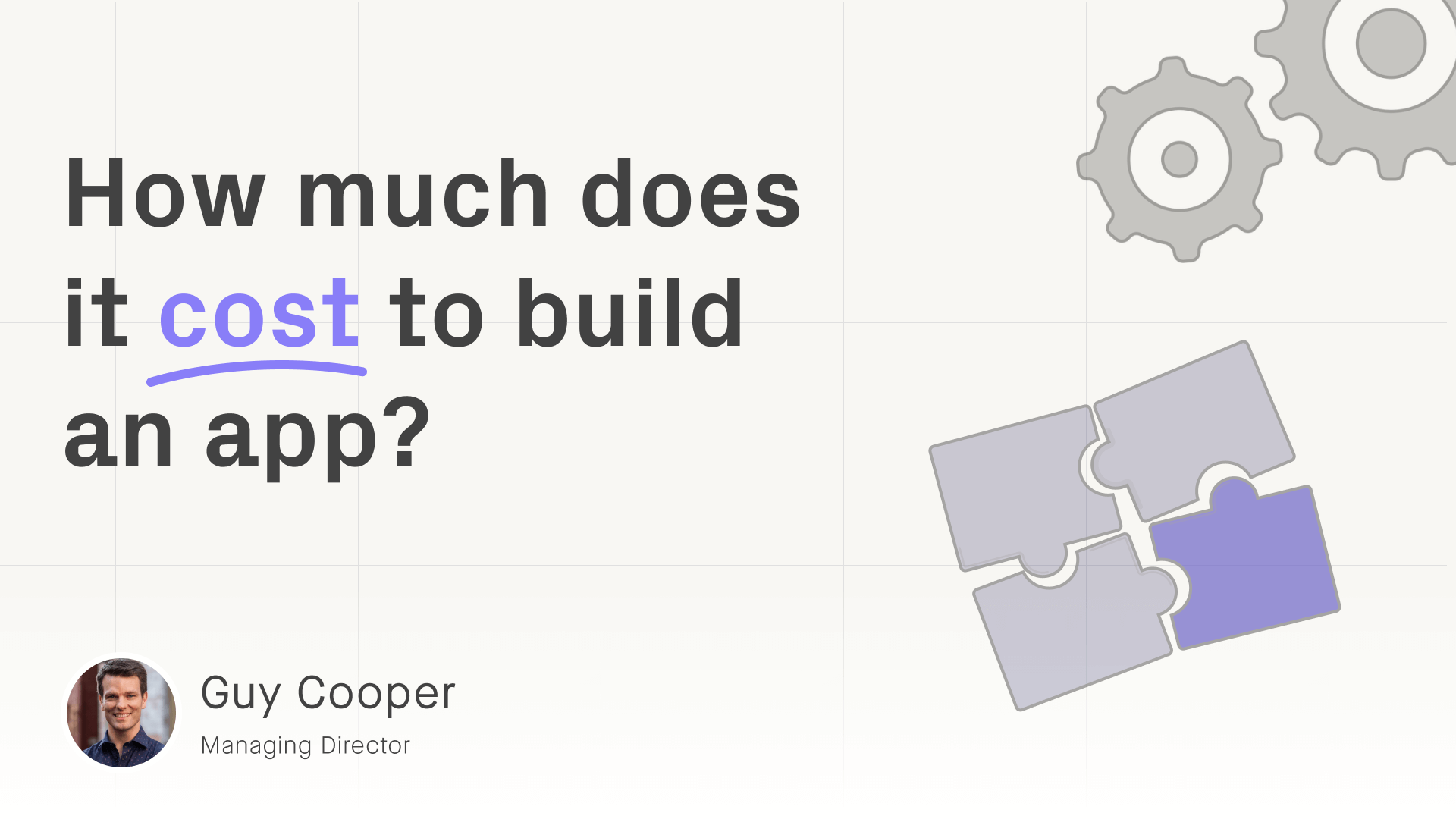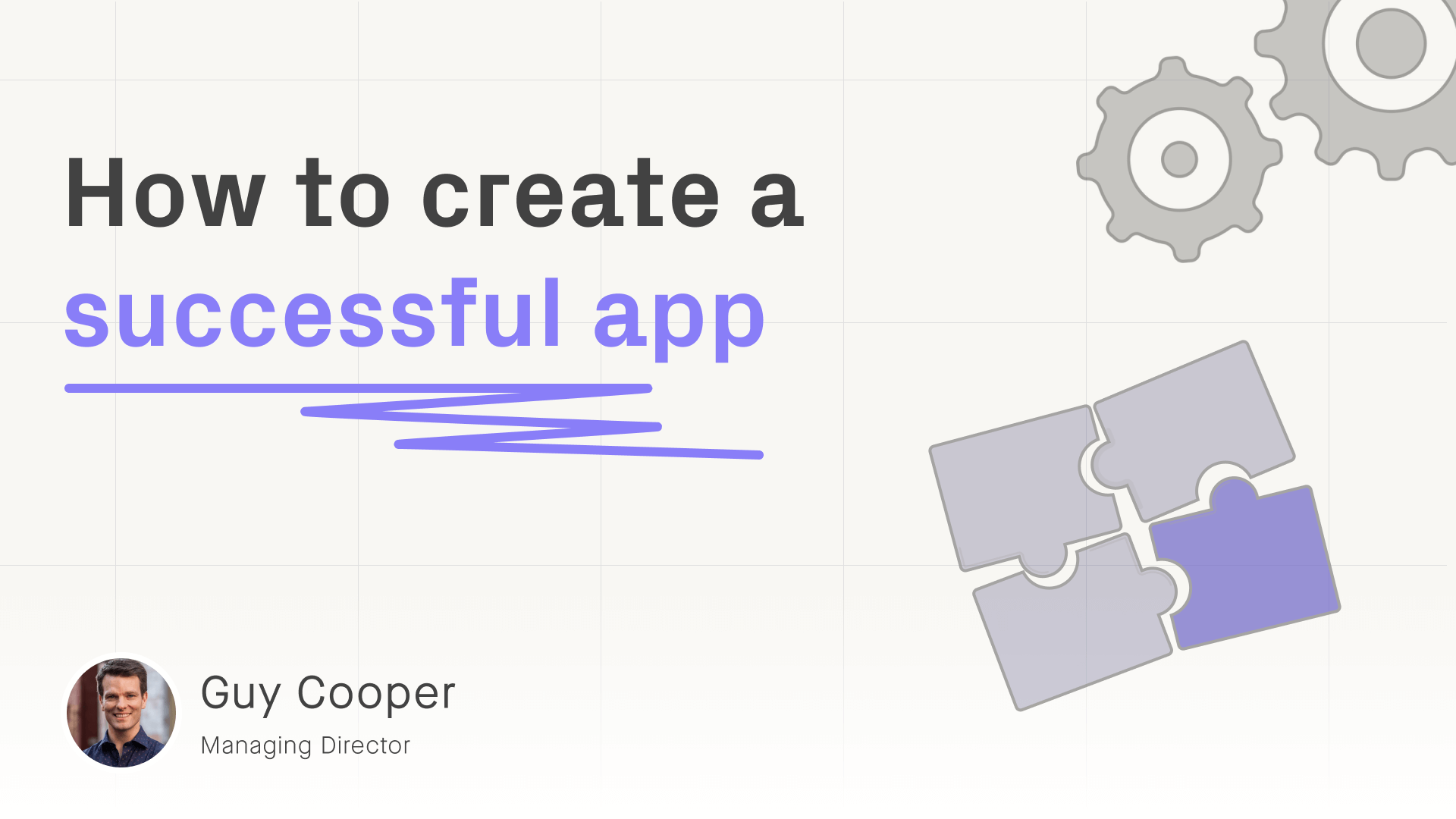How to build an app – 8 critical steps to create your app
11 October 2019
As an app developer, one of the questions we are asked from Startups, Business and Government is how to build an app. No two app development companies will build an app the same way. But there are 8 steps that are critical.
The steps to build an app are:
- Confirm your audience, problem and goals
- Draft the app solution
- Design the app experience
- Create the app branding and visual designs
- Build the app
- Launch your app and test with users
- Review and iterate the app
- Maintain your app
1. Confirm your audience, problem and goals
The most important step to build an app is the first one – understanding your audience, problem and goals. And you can start this even before you engage an app developer. It is focused on using research and discovery to answer the following questions:
- What is the problem my app idea is trying to solve?
- Who is experiencing this problem?
- How are they experiencing the problem?
By asking these questions, you will ensure that you start with a clear problem statement and an accurate understanding of your users.
There are a number of approaches you can take to do this, including conducting user research. Wave Digital can guide you through this step and help you create a strategy for your product. But regardless of whether we help you or not, at a minimum we recommend you go and have a chat with the target audience for your app. Having these conversations will give you a much better understanding of their fears and frustrations, their personality and how tech savvy they are.
Why do this work upfront when creating an app? Being clear about the problem you are trying to solve will make it easier for potential app developers to deliver a better solution. Different user groups also have different needs which impacts on how you design the interfaces used within your app. The more defined the target audience is, the less generalised and more focused the user interface will be. An interface that caters to everybody in the world takes longer to build with more complexity. Moreover, it is not going to be as useful as a highly targeted experience based on a really solid understanding of what your users need.
2. Draft the app solution
Once you have a clear problem statement and defined your users, the next step to create your app is to start drafting your app solution. This involves identifying opportunities for solving the problem. There are a number of ways to do this. One technique is benchmarking. This is used to highlight how others have approached the problem. It involves researching products in the relevant industry, along with other non-related industries, locally and globally. The exercise tends to focus on the core part of the problem your product is trying to solve.
Another technique is using scenarios or user journeys. This involves stepping back and identifying the scenarios where your app would be used in a real world context. It allows you to see the full context of the problem you are trying to solve. By working through each user journey, you can identify pain points in the current process for the user, where opportunities lie to reduce these, and how your product fits into the bigger picture.
User stories can also be helpful in identifying which features of your app will be most valuable to the user. By analysing the user’s journey, you can identify at what point they need certain tasks completed by the app. For Startups looking to deliver an Minimum Viable Product on a limited budget, prioritising features that are critical to solving the core problem is very important.
3. Design the app experience
Designing the app experience for your user involves two parts – the user experience design and the technical design. Delivering a successful user experience (UX) means making the app relevant, easy to use and intuitive. An app designer will draw on the work completed in the previous steps to understand the problem and the user, to prepare wireframes. Wireframes are a way of visually articulating navigation and functionality - how the user would use the app. They provide a rough structure for development. Wireframes also help clients to easily explore the core of the user experience and navigation without the distraction of more subjective aspects of visual design (eg colour).
Technical design is completed by the app developers. It involves investigating the technical feasibility of your platform, including solution architecture and creating a functional and technical specification. This clearly articulates the requirements for the app from a technical perspective. For example, it may specify where and how the app will need to integrate with other systems. For high risk aspects of the project, an app developer may build a technical proof-of-concept. This tests the technical feasibility of the app idea. It also highlights problems and opportunities which may influence the experience designs, and can be solved prior to development commencing.

4. Create the app branding and visual designs
Once the wireframing has been completed, the next step to build an app is to create the visual design. The app designer will consider how the elements of the app look on the screen and how they function. For mobile apps, they will be taking into account the specific design patterns for iPhone and Android. By making sure the app is visually appealing, the visual designs serve to enhance the user’s experience of the app.
The visual designs will leverage the branding for the app. Branding covers the logo, brand mark, colour palette, typography, iconography, imagery and graphics. If you do not already have a brand (for example, you’re a startup), then Wave Digital can work with you to create a unique brand and visual identity.
It is at this point that clients may look for an app prototype. An app prototype is created using the visual designs with no coding involved. This is a great low-cost way of effectively communicating your app idea - whether to investors, stakeholders or future users - as it allows people to download and interact with the app before development commences.
5. Build the app
App developers will use the visual design and technical specification to code the app. Each app developer will have a range of technologies that they work in. At Wave Digital we deliver native iPhone app development and native Android app development. We are also React Native experts which enables us to use one code base to build both an iPhone and Android app concurrently. Where there is a web app, alongside an iPhone and Android app, then this will involve developing in different (web) technologies for the backend and the frontend.
For app developers using an iterative development process, you will get an opportunity to play with an early iteration of your app. There will then be multiple app releases over a 1-6 month development process which will include quality assurance and user testing. At Wave Digital, all our app development takes place at our Melbourne office by local developers.
6. Launch your app and test with users
The next step to create your app is to list your app on the Apple App Store and/or Google Play Store (your app developer can help with this). You will also need to market your app. This may include submitting your app to review sites, using social media and attending relevant events. Publicity for your app will increase the number of users along with the opportunity for feedback! Was your understanding of what was important to users correct? What do they like and what do they want more of? Including a feedback form within your app is an easy way to gather suggestions for future versions.
7. Review and iterate the app
Successful apps iterate. And iterate. And iterate. They do this to make sure that the app continually evolves and responds to its users as well as continues to address the problem it is trying to solve. When budgeting for your app, it is important to set aside some funding for additional features for the next version of your app.
8. Maintain your app
The final step to build your app is putting in place a plan for app maintenance. While it is typical for app developers to provide a warranty period after your app is launched, once the warranty ends, you will need to consider how you will maintain your app. What will you do if a user identifies a bug or if a new device is released?
For mobile apps, app maintenance services typically cover bug fixes, ongoing technical support, security upgrades, and application maintenance as a result of operating system, browser or device updates. At Wave Digital, for example, we prepare for each major iOS and Android update and device release by performing a range of tests on your mobile app and fix any impaired or broken functionality as a result of the changes. For web apps, you will need ongoing services in the form of infrastructure management including hosting. Wave Digital provides a range of cloud infrastructure setups to suit specific needs, along with emergency support and response to outages.
Interested in building an app? Contact us today for a free 30 minute consultation with Guy Cooper, our Managing Director.




